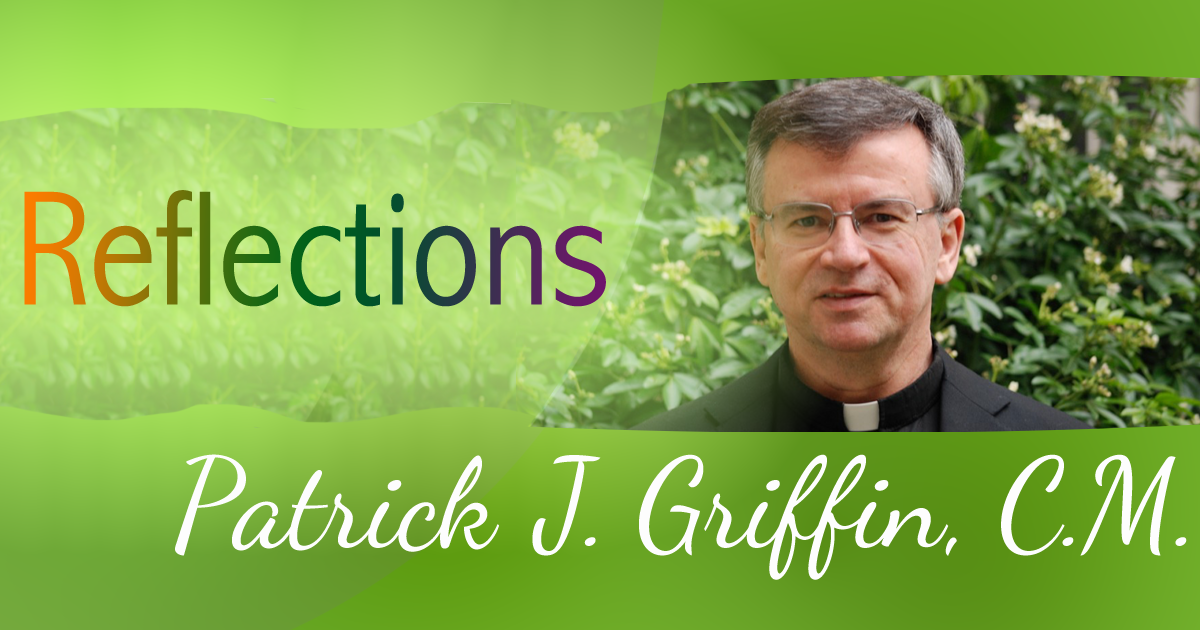
A Vincentian View: Seeing and Believing
Two words seem to emerge regularly in our Gospel readings of the Easter Season: one word is “seeing” and the other is “believing.” I think these powerful words go together as we think about the way in which we express and grow in our faith.
On Divine Mercy Sunday, we hear of how Jesus appears to his disciples after the Resurrection. At the sight of the Lord, the apostles rejoice and believe. Thomas, however, is not with them; when he returns, they speak to him of their blessing:
“We have seen the Lord.” But [Thomas] said to them, “Unless I see the mark of the nails in his hands and put my finger into the nailmarks and put my hand into his side, I will not believe.”
He has not seen, and so will not believe. The stage is set for his encounter with the risen Lord on the following Sunday. We, too, anticipate the lesson.
When Jesus appears among the assembled disciples, he once again offers them peace and addresses Thomas:
“Put your finger here and see my hands, and bring your hand and put it into my side, and do not be unbelieving, but believe.”
Thomas is, of course, overwhelmed and confesses Jesus as his Lord and God. Jesus, then, provides the teaching towards which this story has tended:
“Have you come to believe because you have seen me? Blessed are those who have not seen and have believed.”
The reference engages the Christian community reading the text, and it engages us. Seeing and believing are connected. One can lead to the other…but not necessarily in that order.
Fast forward to this past Sunday and the disciples on the road to Emmaus. Their story runs in a different but parallel direction. The two men are walking along:
And it happened that while they were conversing and debating,
Jesus himself drew near and walked with them,
but their eyes were prevented from recognizing him.
Because they do not believe that Jesus is raised from the dead, they do not see him even when he travels beside them and talks with them, even when he teaches them as the Lord had done. Without believing, there is no seeing. Only the breaking of the bread stirs their spirits:
With that their eyes were opened and they recognized him.
Sometimes seeing does lead to believing. People do come to believe when they see others living the Christian life faithfully and without artifice. People come to believe when they hear the Gospel message proclaimed with sincerity and conviction. Opening one’s eyes to the witness of good people in our world can lead to deeper and enriched belief. People show us by their words and action what it means to believe in Christ and allow him to be the center of our lives. How many times have you seen upright people whose goodness leads others to deeper faith? That is the whole meaning of the saints. Seeing the conviction of our founders and foundresses led others, and has led us, to recognize Christ present in the world. Our faithful witness provides that same grace for each other and for those whom we serve.
And sometimes, believing leads to seeing. When we believe, our sight can become more accurate and acute. Believing that Christ is alive and active in our world allows people to see him present in acts of kindness, in words of forgiveness, and in signs of hope. Knowing that Christ is present in those who are poor and afflicted in our world enables the sensitive hearts to see him there and react to his call to service. Believing that Christ is present in the Eucharist enables us to hear and see him among us, and draw strength from him. Believing Christ is present in the sacrament of reconciliation allows us to accept his forgiveness and the grace for a changed life. As we expect to find Christ in different times and places, we will.
Yes, seeing is believing, but believing is also seeing.







As always it is wonderful to share in your reflections! They bring the Scriptures into our daily lives. So down to earth and also very inspiring. Thanks for giving this gift.